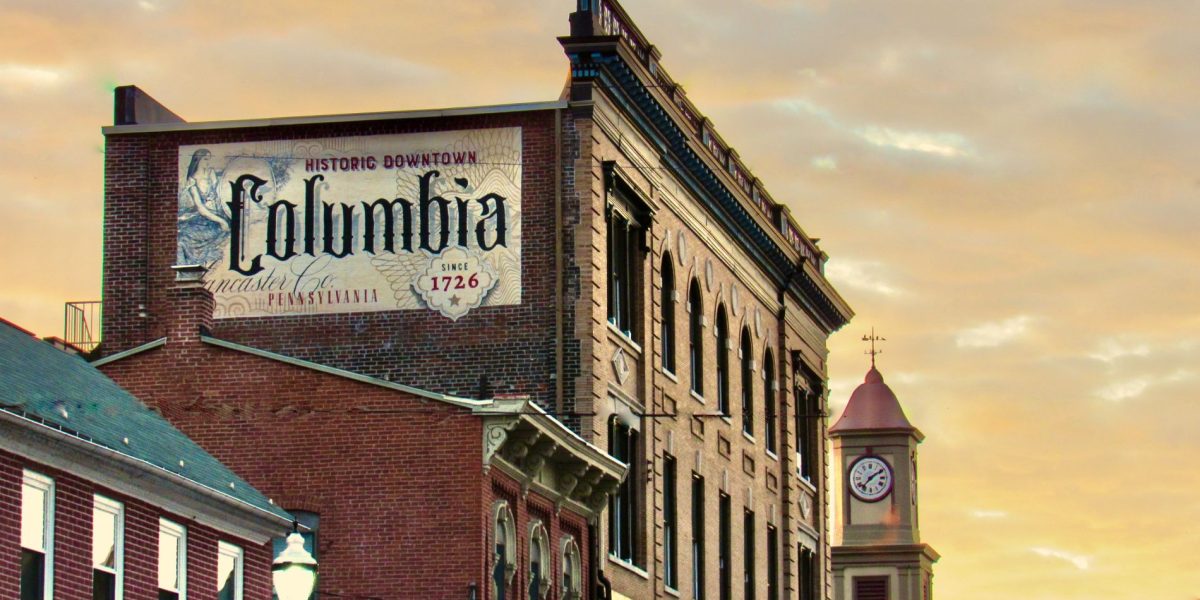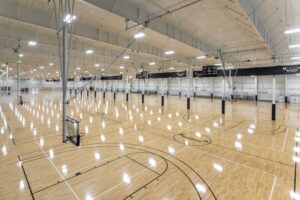Downtown Columbia
From good food and coffee, to architecture and antiques, to its rich and vibrant history, Columbia Pennsylvania offers something for everyone. Grab a cuppa and take a trip back in time to discover the many historic sites that reside in our beautiful river town.
If you take time to visit our local artisans, store owners, service providers, and trails – you’ll be coming back for more again and again!
1. PA RAILROAD PASSENGER STATION

First on our list we have what is the current home of local cafe Coffee & Cream.
In 1870, a new Pennsylvania Railroad Passenger Station was erected by Columbian W. W. Upp. In previous years the tickets for passengers could be purchased at the Washington Hotel located on the southern corner of Front & Walnut Streets.
The two story sustained a central ticket office, separated men’s and women’s waiting rooms, while the second floor was occupied C&PD superintendent’s office and conductors room.
With Columbia’s retail business and manufacturing booming in the late 1800’s the station was so active with a host of buyers, dignitaries, salesmen and visitors. The depot became so busy that Columbia had six different newspapers that would satisfy all political guests in town with a newspaper boy waiting along the train depot just waiting to sell the next paper hot off the press.
The passenger station was eventually closed in the 1920’s after the Pennsylvania Railroad moved to Enola and eventually sold to Penn Central.
2. JOHN HOUSTON MIFFLIN HOMESTEAD

Next up we have the beautiful John Houston Mifflin Homestead.
John Houston Mifflin, an amateur poet, studied portrait painting at the Pennsylvania Academy of the Fine Arts under I. R. Smith, Thomas Sully and John Neagle. John Houston Mifflin later followed his brother, James Mifflin, to Savannah, Georgia where he began painting and photographing portraits of wealthy families.
From 1836-1837, John Houston Mifflin traveled through Europe in the company of other artists, studying the works of the great masters. Upon returning to Columbia, he married Ann Elizabeth Bethel Heise, a daughter of Solomon Heise of Frankfort, Germany and Patience Bethel of Columbia.
Ann Elizabeth Bethel Heise was descended from John Blunston who arrived in Pennsylvania in 1682 and her mother was a sister of Samuel Bethel III of Columbia who had married Sarah Hand, daughter of Revolutionary War General Edward Hand of Rockford. Samuel Bethel III renovated and greatly enlarged Belmont Mansion in Columbia that was originally built by Pennsylvania Assemblyman Samuel Blunston in 1727.
Upon renovating and greatly enlarging this dwelling in 1803, Samuel Bethel III renamed it Mt. Bethel Mansion and subsequently commissioned the construction of the elegant brick Federalstyle townhouse on an adjacent lot at 165 Walnut Street.
3. SHANNON ARMORY

If you head over to 221 Walnut St you will find the Shannon Armory. This is now used by the Columbia Boys Athletic Association as a place to hold games, events and practice.
The idea for what became Columbia’s first military units and our State Armory was fostered by two opposing political units in 1876. There were the Hayes and Wheeler Republican Marching Club, commanded by David Brainard Case, and the Hendricks Democratic Marching Club, commanded by Daniel Sample.
Composed of young men of the town, they were well drilled and were in demand for parades driving the 1876 Presidential election campaign.
In January 1905, Major Edward Shannon was elected treasurer of the company and was authorized to negotiate with the John Moore estate for adjoining properties. Major Shannon purchased the property for $2400 and an additional lot 35 by 40 feet in the rear of the Moore property for $200.
On April 17, 1906, the property, by consent of the company, was transferred to the Commonwealth of Pennsylvania who assumed a remaining debt on the grounds for $2150.
Today, the building occupies the Noah W. Wenger Center – and you can catch CBAA in action there after school and some weekends.
4. SQUIRE STOVER

Right in the middle of Columbia’s hustle and bustle is the legendary Stover’s.
Stover’s News Agency is one of the borough’s oldest businesses. Stover’s has been owned and operated since Christopher H. Stover founded the business in 1886. The original location of Stover’s and also the Lodge was on the corner of Third and Walnut streets, site of the Chamber of Commerce office. The building was torn down in the 1940’s.
Stover’s is a fourth generation business, previously managed by Mr. Stover’s son, Elmer H Stover, then his grandson, Elmer C. Stover and presently by Mr. Stover’s great grandsons’ James R. and Richard L. Stover. Stover’s is a one stop store where local residents can purchase newspapers, magazines, greeting cards, lottery tickets and much, much more.
Today, Stover’s still exists as a convenience store for all of your local needs.
5. SCHROEDER & HINKLE PHARMACY

Visit Schroeder & Hinkle Pharmacy by grabbing a bite at the delicious Hinkle’s Restaurant. The renovation of this historic landmark was quite an undertaking of love by local investor and builder, Don Murphy – owner of Cimarron Investments.
On March 29, 1889, Samuel Hinkle decided to learn the drug business and entered the store of P.S. Brugh for that purpose. Four years later in 1893, Luther J. Schroeder and Sam Hinkle entered into a copartnership of Schroeder and Hinkle’s Pharmacy. In 1958, the business improved its soda fountain and added food to the menu.
Today, the original pharmacy is no longer in operation, but the restaurant is still flourishing, with the addition of an ice cream sundae bar. Hinkle’s Restaurant has also been joined with Murphy’s Mercantile & Co. to deliver locals and tourists quality food, handcrafted gifts and a warm and welcoming atmosphere.
6. COLUMBIA MARKET HOUSE

The best of Columbia’s local flavor and architecture can be found in Columbia Market House.
Columbia Market House was built on April 17, 1868. The beautiful building stands 118 feet long, 80 feet wide, and is furnished with 180 stalls inside and 37 under the projecting roof outside.
The design of the Columbia Market House is attributed to Isaac Hobbs and Samuel Sloan, with Michael Liphart as the builder. The large open interior space is uniquely spanned with arched Howe trusses, reinforced with iron tension rods.
The Columbia Borough funded the construction of the Market House, which was unusual at the time. Many of the market buildings in the state were privately funded. After years as a successful farmers market, the Market closed in 2017 due to slowing business but reopened again in 2021.
You can visit the year-round market today and find many different vendors and local goods on Saturdays from 7 am to 3 pm.
If you want the underground scoop – you can literally tour the dungeons under its floors if you connect with the Market Manager Chris Vera. He also heads up the local Historical Society and is a wealth of information about the town.
7. CENTRAL NATIONAL BANK

Just across the street from the amazing HomeGoodies & Coffee is the historical Central National Bank.
Columbia’s Central National bank opened on May 7, 1888.
The question of starting a new national bank in Columbia was agitated during the summer and fall of 1887, when some subscriptions were secured and the preliminary papers filed, but the project did not appear to succeed until Andrew J. Kauffman, Esq., and Mr. Wm. Morris took an interest in the enterprise. Through their active efforts, the interest revived and the entire capital stock of one hundred thousand dollars was subscribed.
The building cost $32,000 to build a new structure in 1911. Today, the building is the home to a Truist Columbia branch.
8. SAMUEL & LILLIAN HOMESTEAD

Nestled in the middle of beautiful Locust st is the Samuel & Lillian Homestead.
Lillian Slaymaker Evans started a patriotic order of Daughters of the American Revolution in Lancaster in the 1930s.
After reading a newspaper article of the then newly formed D.A.R. chapter in Washington, Mrs. Evans wrote to First Lady, Mrs. Caroline Harrison, and submitted a request to join the organization. Quickly accepted, her first accomplishment afterward was the organization of the Daughters of the American Revolution Lancaster Chapter, called Donegal.
During Lillian’s years involved, she instituted a prize essay contest for student Seniors and a student loan program to help promising young women advance after completing School.
9. KEYSTONE FIRE COMPANY
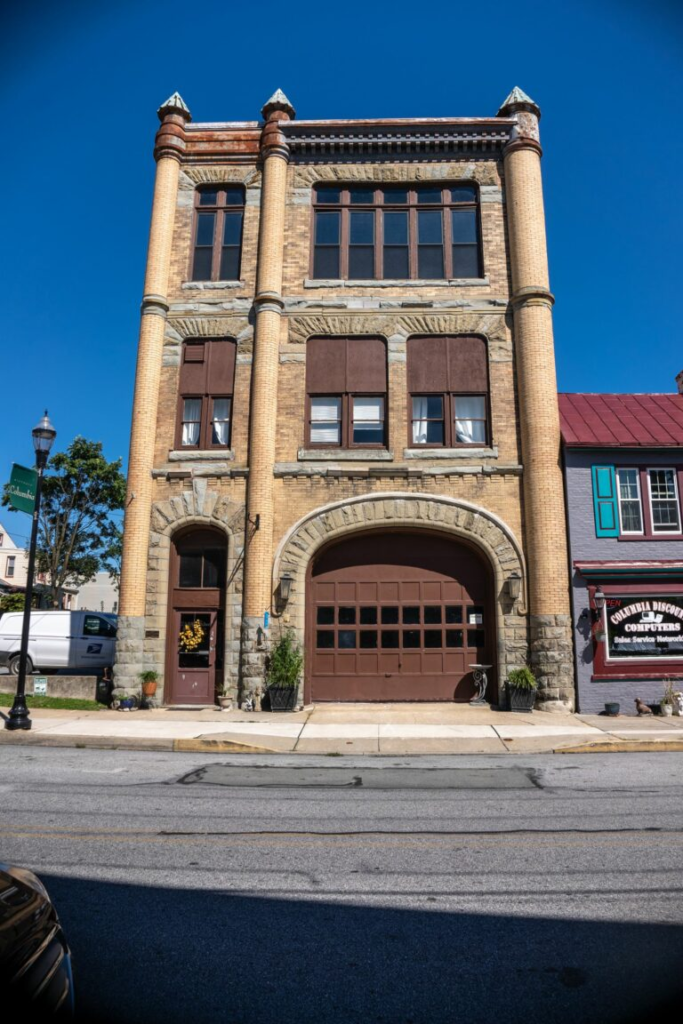
Over on 4th Street next door to the Columbia post office, you will find the stunning Keystone Fire Company building.
The Keystone Hook & Ladder company was chartered October 25, 1890, by a group of Columbians mostly employees of the Keeley Stove Company, who thought the other fire companies could be profitably augmented by a hook and ladder company.
The first aerial ladder was a D. D. Hayes design American LaFrance horse-drawn tiller model.
The current building was constructed for $15,000 and dedicated after a huge fireman’s parade on July 1, 1899.
10. COLUMBIA NO. 1 FIRE COMPANY
At 268 Locust st resides the intriguing Columbia No. 1 Fire Company.
History is coming soon for this unique location.
11. ZEAMER PHARMACY
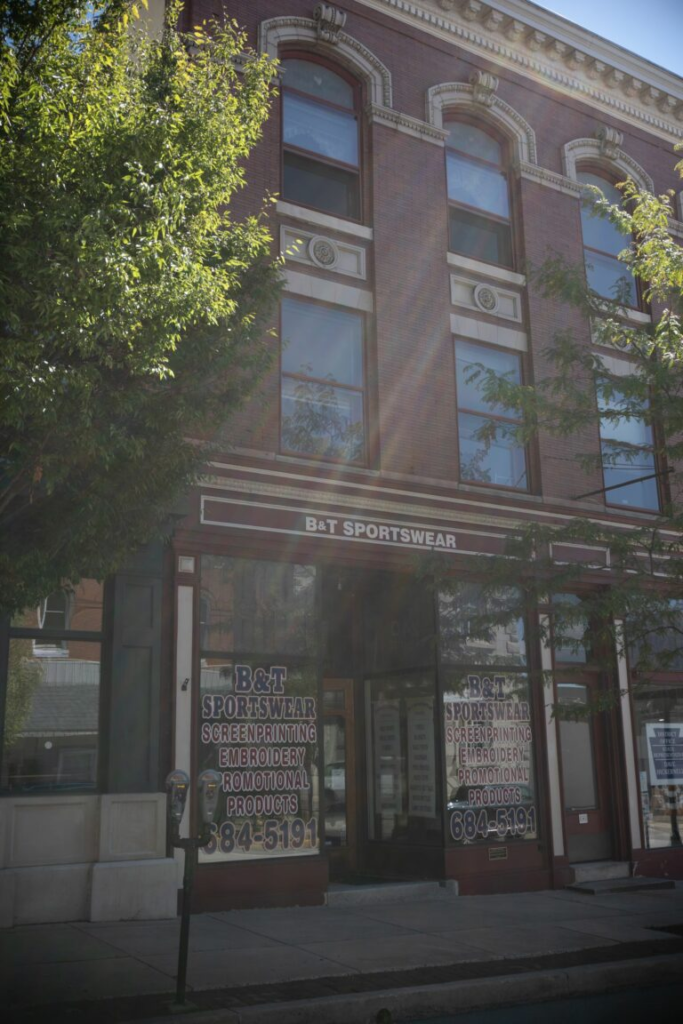
The location that is now B&T Sportswear was once historic Zeamer’s Pharmacy.
In 1800, P. S. Brugh had two pharmacies, one at 156 Locust Street and another at 256 Locust Street, the former being managed by Luther J. Schroeder for several years. Later, Mr. Brugh, after closing his store at 256 Locust Street opened another at 240 Locust Street, while continuing his Front Street business. When Columbia businesses began to move uptown, he discontinued the Front Street store. In 1893, the store at 240 Locust Street was sold to Harry W. Zeamer, who enlarged the store, putting in the longest soda fountain bar in Lancaster County and stocking the first Victrola and records ever offered by Columbia stores.
In 1923, Mr. Harry W. Zeamer’s cousin, Harry C. Zeamer purchased the pharmacy and, after operating it for six years at 240 Locust Street, moved to 315 Locust street until 1934 before discontinuing the business.
12. ODD FELLOWS HALL

On the corner of Locust and S 2nd street you will encounter the wonderful Odd Fellows Hall.
On June 28th, 1842, the Odd Fellows met for the first time at Henry Marin’s home located at 353 Locust. The group started out small, and GrandMaster Brown delivered the charter to the original six charter members. It was at this first meeting that the group also elected their first officers. On January 24th, 1843, the group opened their lodge room to the Public.
About that same time the next year it was decided that they should seek a more considerable space for the lodge and the vast number of members it had acquired. At a meeting, it was discussed where to relocate, and soon enough, they resolved to move to the 3rd floor of J.F. Houston’s house.
It took awhile to get all of the official documents in order. In May of that same year we sent our application to the grand lodge to gain permission to move to a new location. Soon enough all would fall into place and the Odd Fellows would sign the lease on July 8th 1844 the lease was signed and two weeks later, the lodge members would parade to the new hall in uniform.
13. COLUMBIA BANK & BRIDGE COMPANY

Today, Columbia Art Printing Company occupies what was once the historical Columbia Bank & Bridge Company. They now give tours of the building and can be booked directly on their website.
In 1839, Colonel Samuel Shoch kept the books tidy and became the cashier of the Columbia Bank and Bridge Company. Samuel was born in Harrisburg on May 29th, 1797, and received an early education at various preparatory schools, as well as Nottingham Academy in Maryland. Later on, he was made Recorder of Patents under John Cochran in 1812, secretary of Land Office, and Recorder of Surveys for Andrew Porter.
Stephen Smith, Thaddeus Stevens, William Whipper, William Wright were all directors for the Bank and Bridge company in following years. Additionally, the first covered bridge to span the Susquehanna was completed in 1814 and Columbia Bank and Bridge instituted the first tolls for all forms of passage.
14. VIGILANT FIRE COMPANY
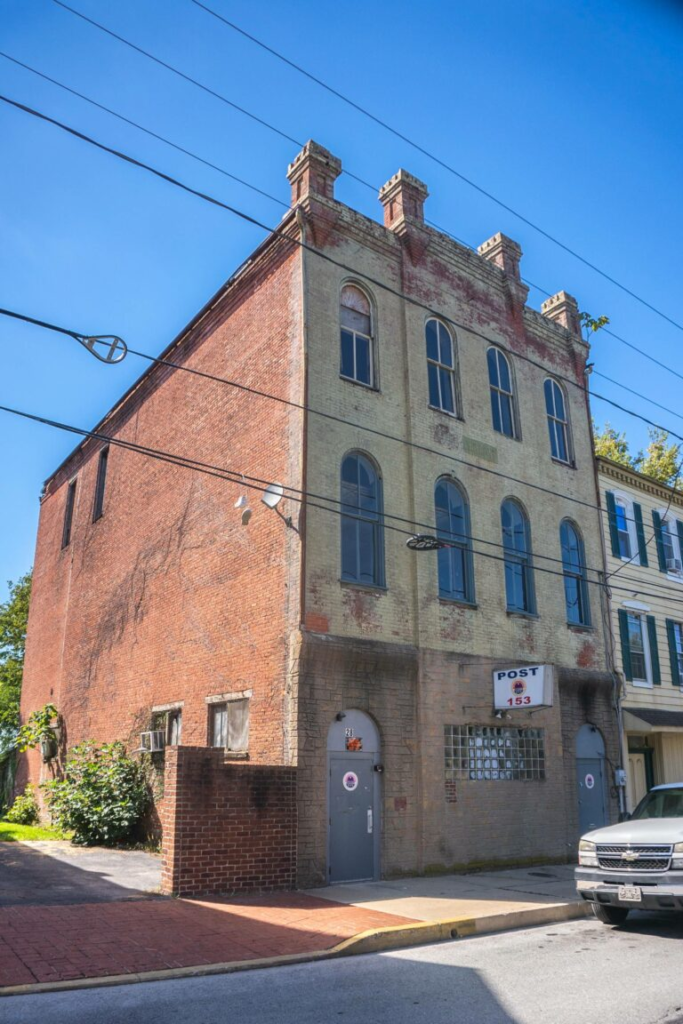
At 28 N. 2nd street you will find the site of what was once the Vigilant Fire Company.
This two storied frame house was where Benjamin Gonter lived from 1859 to 1865. Jacob Strein preceded him and a man named Joe Richardson occupied the home in the 1930s.
This had been a vacant lot all the way up to James Bennett’s house, which had been Stephen Smith’s before 1850, and all intervening houses – except the church – were built since that year.
Smith’s house was built in the early 40s.
15. FIRST ENGLISH LUTHERAN CHURCH

Finally, towering over 2nd street, we have the beautiful First English Lutheran Church.
The Evangelical English Lutheran Church dates back to 1849, when Rev. J. H. Menjes of Mount Joy preached at stated times in the English language about the German Lutheran Church on Walnut Street. Shortly after, he found the location in Columbia and dedicated his time to preparing the way for the organization of an exclusively English Lutheran Church.
Land for the site of the church was purchased on April 2, 1850, and the building finished over the next 2 years for a price of $6,390.50, more than half of which remained as debt against the new congregation.
The congregation was incorporated by special act of the Legislature, March 8, 1853, under the title of the English Lutheran Congregation of Columbia.
So if you are coming to town – make time for not only trails, riverviews, and food and drink – but also to walk the streets and appreciate our incredible architecture and pride in restoring and preserving the past.

